The Weddell Seal’s Nose
This journal brought to you by:
Crosswind Elementary Students:
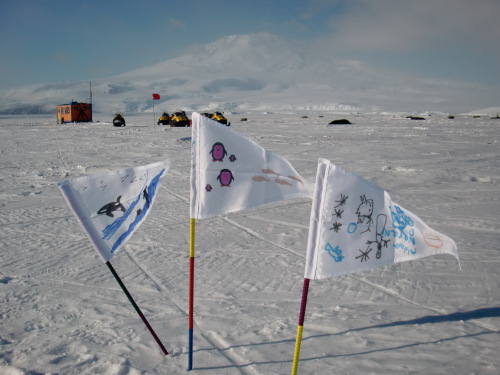
- Taylor Dodge in 3rd grade
- Alyssa Todd in 3rd grade
- Aldair Naranjo in 3rd grade
We've seen some seals and they are amazing!
I wasn't planning to share this journal until later but since I got such a good video of one of the seals l just couldn't wait. The video will come a bit later but for now – sniff, sniff – let's talk about the Weddell seal nose!
Weddell seals have a very unique nose – it’s actually pretty amazing!
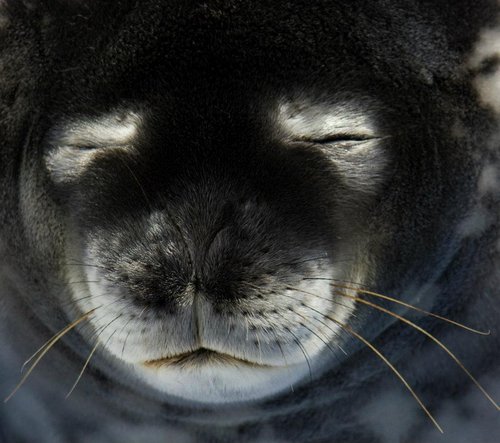
I am so impressed by this animal! Everything about these seals is big and its nose is no exception. Two things impress me most about the seals nose:
- How wide they can flare their nostrils
- That they can open and close each nostril independently.
Without using your fingers, do you think you could open and close each nostril one at a time?
Try it!
Tough isn’t it!
Check out this Weddell seal doing some crazy nose yoga!
.
How do you measure up?
Scientists have measured the Weddell seal’s “nostril flare” and found it to be about the diameter of a quarter. How wide can you flare your nostrils? Not as wide as a quarter, I’ll bet!
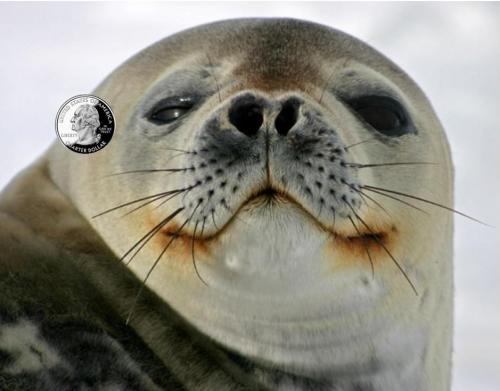
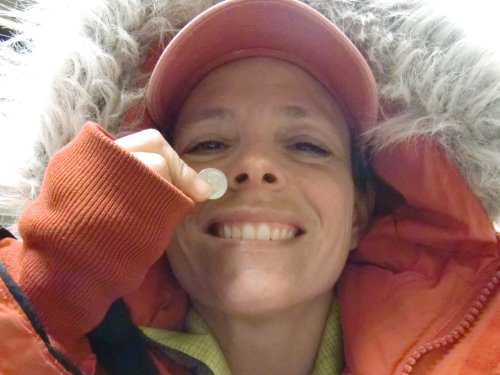
Think about it!
In many ways, a Weddell seal’s nose is like our nose. What’s the main job of a nose? To smell! Weddell seals can’t smell underwater because their muscular nostrils are snapped shut. But on land, they use their sense of smell to recognize each other during mating season and for a mother to recognize her pups.
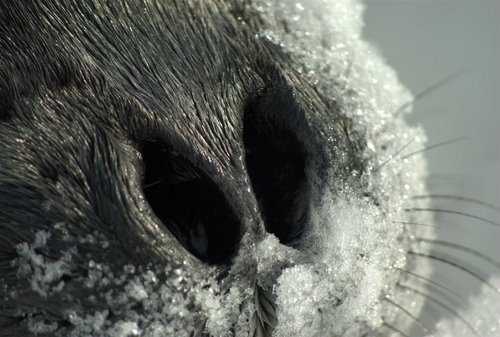
But wait there’s more! Let’s dig deeper!
When we breathe – inhaling and exhaling – we do more than just take in oxygen; we lose moisture! There is a lot of moisture in the air that we exhale. Have you ever seen your breath on a cold day?

That little cloud forms because the moisture in your breath is condensing as you exhale into the cold air. The air that we exhale is also very warm. Why is that? Because our bodies are warm! This presents a problem for Weddell seals. Can you sniff it out - or guess why?
In this dry, freezing environment, normal respiration could cause the seal to lose moisture and precious body heat. Neither of which is good in Antarctica. So, how do they deal with this?
Counter current heat exchange
It’s called counter current heat exchange, and it happens in their nose! That’s right! A Weddell seal’s nose has a lot to do with maintaining their body temperature and hydration levels. In a Weddell seal’s nose there are things called nasal turbinates. Check out the photo below:
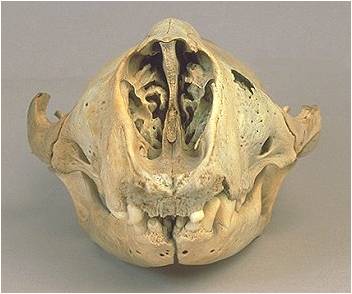
This is actually a skull of a grey seal, but it’s a good example of nasal turbinates. Nasal turbinates are thin bones that divide the nasal passage. They are lined with nasal epithelia, which are loaded with capillaries. It’s their job to warm and moisten the incoming air and to prevent heat and moisture loss in the outgoing air.
Humans also have nasal turbinates, though they aren’t as complex as a Weddell seal’s. Try this: place your hand near your nose and mouth. Breathe in and then exhale through your mouth. Now breathe in and exhale through your nose. Which one was cooler?
The air coming out of your nose is significantly cooler because it’s getting cooled by the nasal turbinates!
What makes this so important?
Weddell seals will fast for weeks at a time during mating and pupping season. They get most of their water from their food, so while they fast, they need to preserve as much water as possible! This is where the nasal turbinates come in handy. Without them, they would lose precious water that their bodies need to survive!
This whole system is called a counter current heat exchange, and it’s an amazing adaptation seals have to survive in this cold environment!


Comments